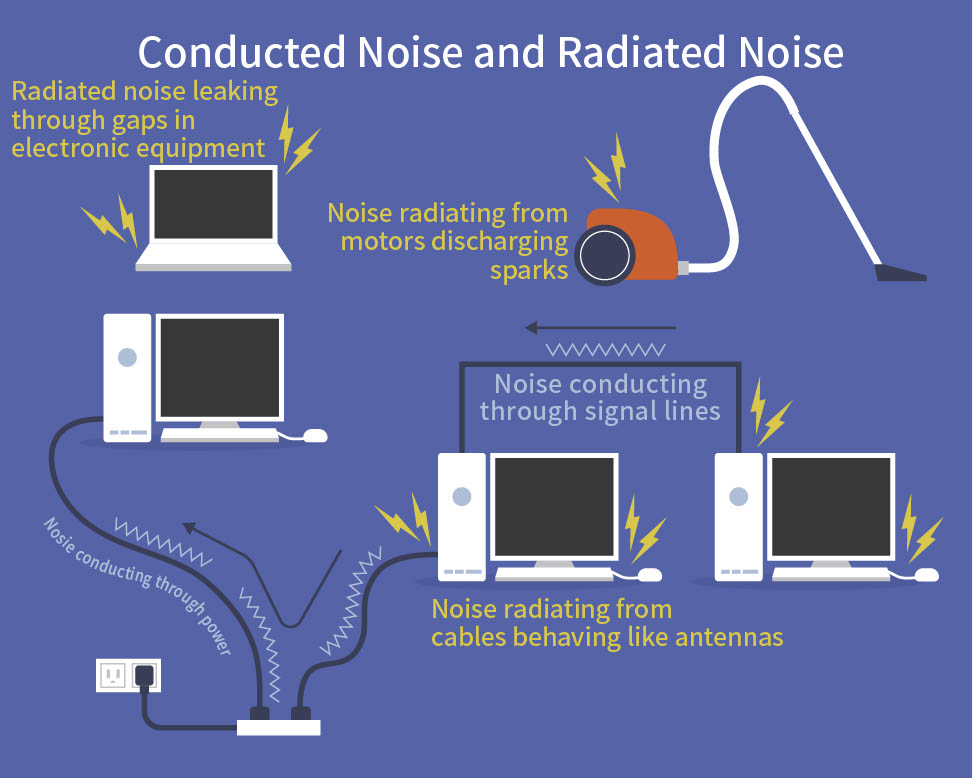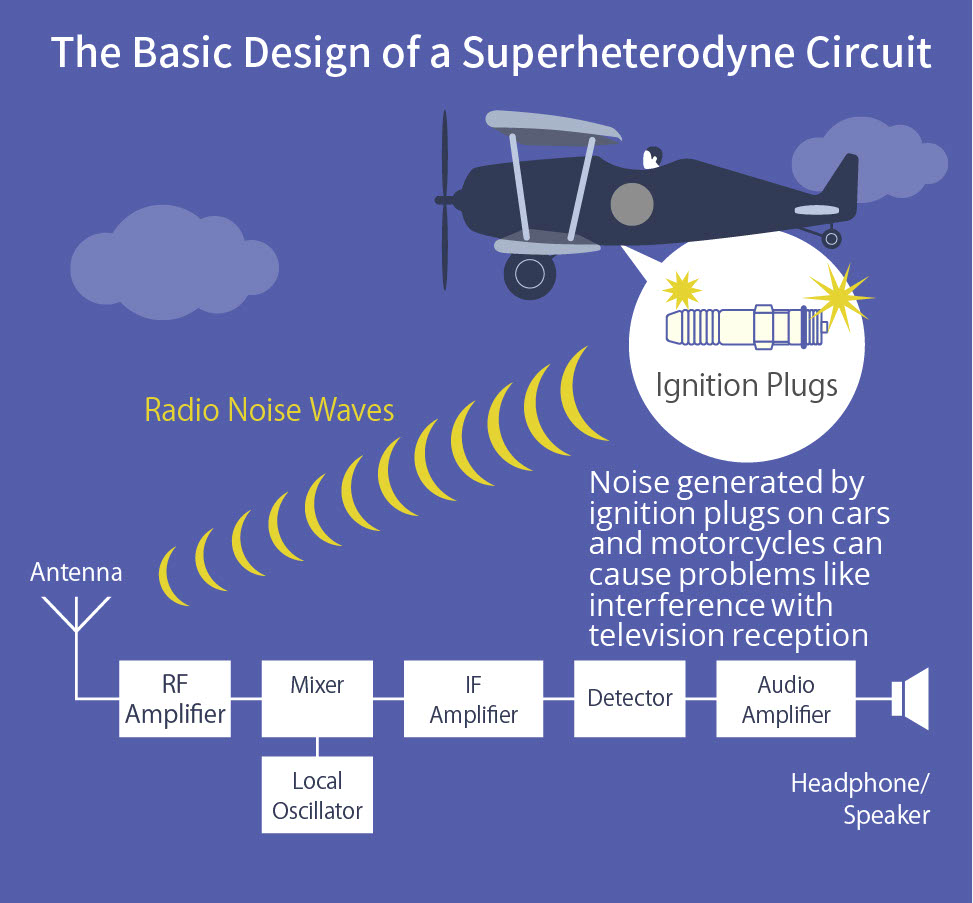Intro to EMC Topics
The Basics—Part 1: What is Noise? What is EMC? The Noise Problem is an Electronic Affliction in a Modern Society

Have you ever experienced your computer making a connection error, or your smartphone suddenly dropping calls? The world around us is full of electromagnetic noise, which can infiltrate through various routes and cause problems with electronic devices. What exactly is this noise that we can’t even see?
What is noise?
The word noise refers to unwanted sounds and information in general. It is often used in the field of telecommunications: in the context of audio, noise would refer to audible disturbances; in video, it could refer to disturbances in the image caused by radio wave interference. Noise could also be in the form of electronic devices picking up electromagnetic waves leaked from other devices.
There are two types of noise: natural noise and artificial noise. Natural noise is generated by lightning strikes, airborne discharges and cosmic rays. Artificial noise is noise that is generated by electronic devices. Among electronic devices, there are those that intentionally emit electromagnetic waves such as broadcast transmitters; those that leak the electromagnetic energy generated internally such as radios and televisions; and those that emanate noise as a side effect of use, such as vacuum cleaners and power tools.


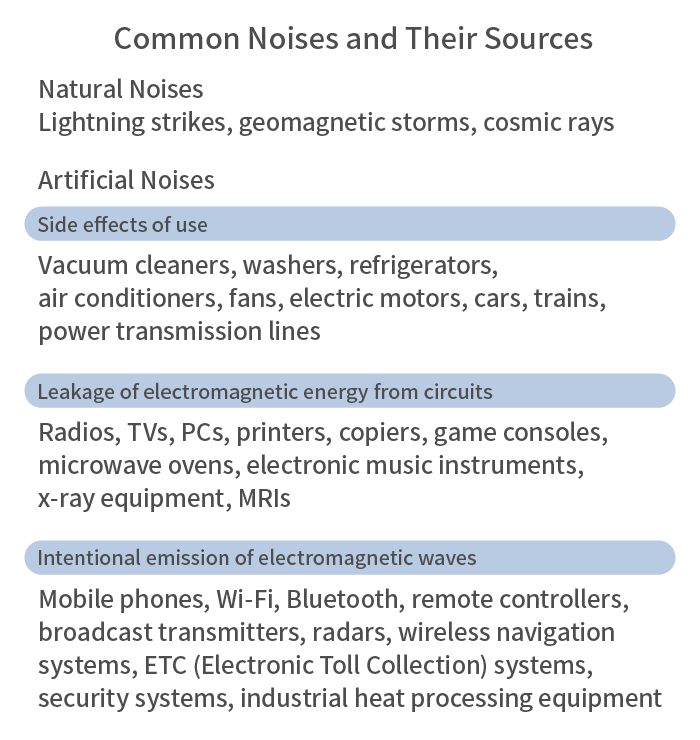
A car radio may pick up noise at a railroad crossing. This is caused by sparks discharged between the pantograph of the train and the overhead power line. When you light an electronic cigarette lighter near a radio antenna, you will hear a sharp “thud” from the speaker. This is because discharged sparks produce noisy radio waves. This is why lightning can disrupt telecommunications. The first radio telegraph, invented by Guglielmo Marconi, worked by sending electromagnetic energy (noisy radio waves, basically) generated by high-voltage discharge sparks, timed as Morse Code (dots and dashes). Of course, there were no radios or televisions back then, so there were no electronic devices that could be impacted. Today, it would create a terrible electromagnetic interference problem.
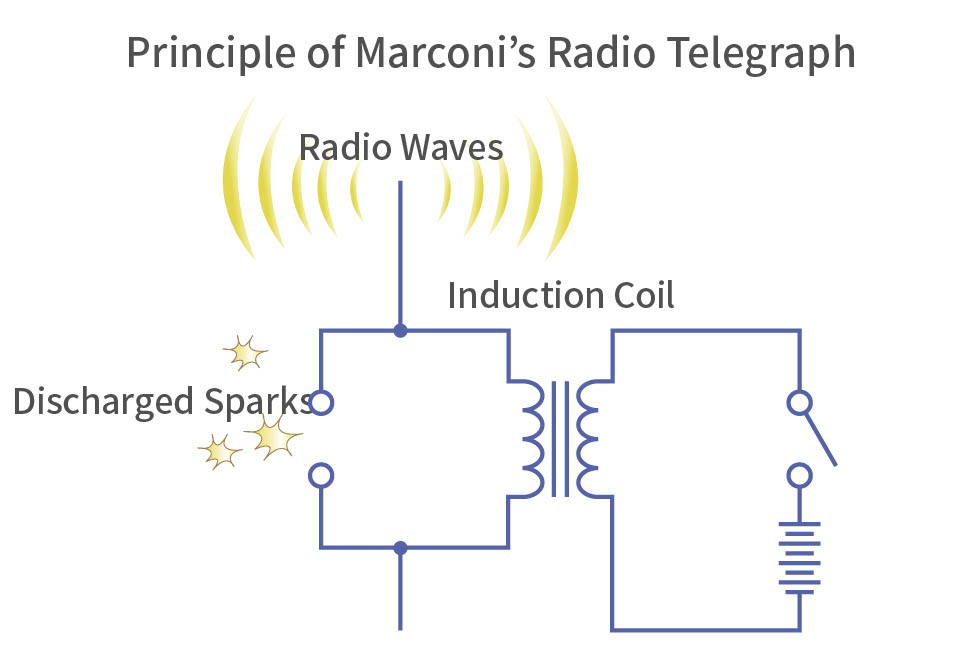
Noise problems in electronic devices are not so easy to solve. What makes noise uniquely problematic is that it’s a form of electromagnetic energy—but so are signals. Electromagnetic energy essential to one system is nothing but unwanted noise for another system that doesn’t need it. Noise is inherent to electronic equipment. It can travel through power lines and signal cables, or fly through space as electromagnetic waves, causing failures and functional degradation of electronic devices.
EMC is about suppressing both generated and intrusive noise
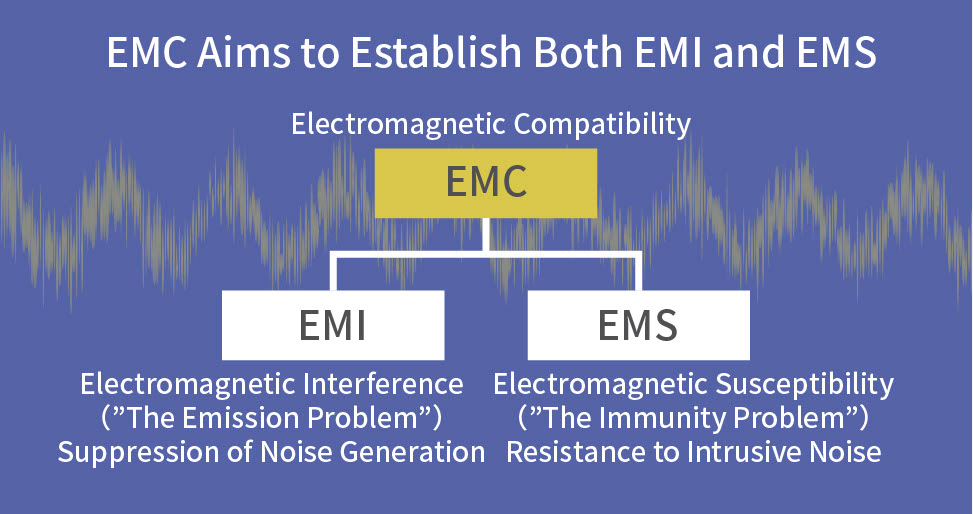
With the rapid development of microelectronics and digital technology, circuits have become more densely packed, and signals have become higher in frequencies and lower in current, making electronic devices susceptible to even weak noises. There have been incidents where noise has caused car controls and industrial robots to malfunction, causing serious problems.
Familiar electronic devices such as computers, game consoles and microwave ovens themselves radiate a variety of noises that affect other devices. The radio waves emitted by smartphones are a significant concern for medical equipment and for people wearing cardiac pacemakers. What is unique about the noise problem is that electronic devices can be both victims and perpetrators of noise interference.
This is why electronic equipment must suppress EMI (Electromagnetic Interference) so that they do not become a source of noise themselves, while protecting against EMS (Electromagnetic Susceptibility) so that they remain unaffected when exposed to noise. Together, this concept is called EMC (Electromagnetic Compatibility). Put simply, EMC represents a combination of both emission (radiation) countermeasures and immunity measures.
TDK’s comprehensive EMC solutions for noise problems
If you look at noise interference as a chronic disease in a modern society that runs on electronics, symptomatic treatment is not a fundamental solution. In order to avoid contracting the disease, it is necessary to pay attention to health and hygiene on a regular basis, and build up resistance to prevent it. In electronic equipment, the four basic methods of noise suppression are (1) shielding, (2) reflection, (3) absorption, and (4) bypassing. These are called the “four elements of EMC,” and you will find that a variety of EMC countermeasure components are used in just the right places.
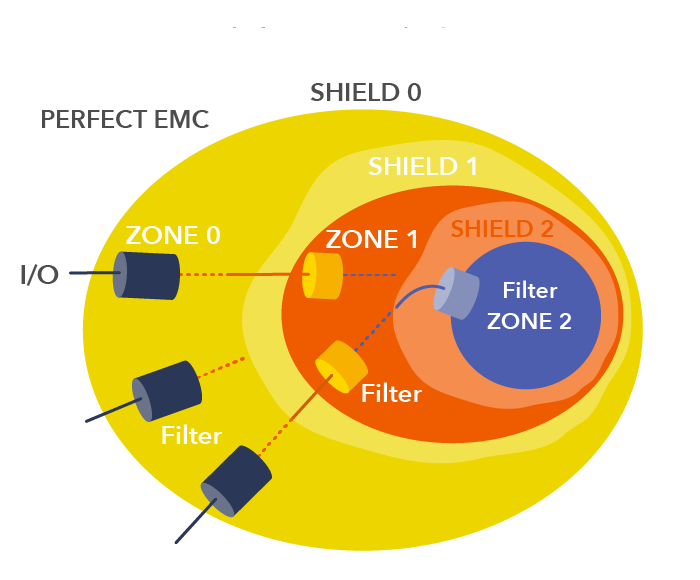
Electromagnetic shielding is applied zone by zone, and noise filters are placed at the interfaces. Additionally, appropriate EMC measures are taken for noise generated within each zone.
The purpose of this series is to serve as an introduction to the noise problem—a legitimate environmental issue on a global scale—and the role of EMC components, which are inconspicuous but indispensable to all types of electronic devices. In today’s globally networked society, and with the emergence of IoT, a tremendous number of electronic devices are interconnected. If the noise problem is left unaddressed, the electronic society will disintegrate from its very foundations.
TDK’s comprehensive EMC solutions are powerful enablers of effective noise countermeasures that meet the advanced needs of electronic devices at all stages, from planning, design andprototyping to commercialization.
TDK is a comprehensive electronic components manufacturer leading the world in magnetic technology



